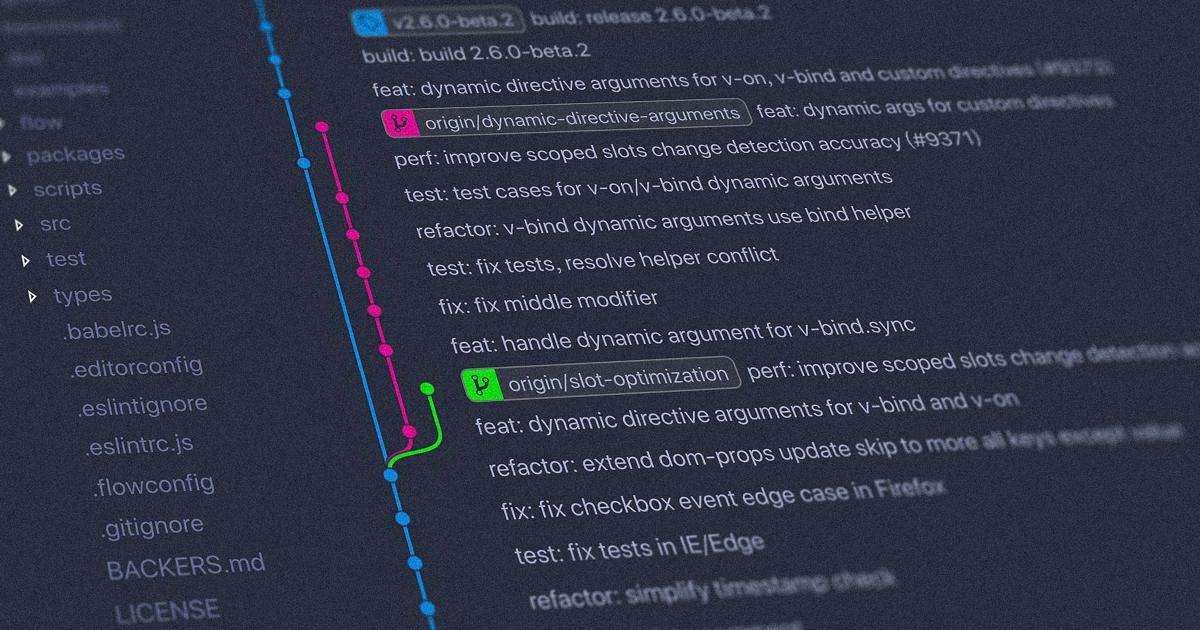Unlocking SEO Superpowers: Mastering Header Tag Optimization


Introduction: The Power of Header Tags
Header tags, also known as H1, H2, H3, H4, H5, and H6 tags, are essential elements of any well-optimized website. These HTML tags are used to structure and organize the content on a web page, providing a clear hierarchy and making it easier for both search engines and users to navigate and understand the information.

In the world of search engine optimization (SEO), header tag optimization is a critical strategy for improving the visibility and ranking of your website. By using header tags effectively, you can signal to search engines the most important and relevant information on your pages, ultimately driving more targeted traffic and better-qualified leads.
In this comprehensive guide, we'll dive deep into the world of header tag optimization, uncovering the secrets to unlocking your SEO superpowers. From understanding the importance of header tags to implementing best practices and advanced techniques, you'll gain the knowledge and tools to elevate your website's performance in the search results.
The Significance of Header Tags in SEO
Header tags play a vital role in SEO for several key reasons:
1. Semantic Structuring
Header tags help create a clear and logical structure for your content, making it easier for search engines to understand the hierarchy and relevance of the information on your pages. By using the appropriate header tags (H1, H2, H3, etc.) to organize your content, you're providing search engines with a roadmap of your page's structure, which can improve their ability to index and rank your content.
2. Keyword Optimization
Header tags offer an excellent opportunity to incorporate your target keywords and phrases, signaling to search engines the main topics and themes of your content. By strategically placing your keywords in header tags, you can enhance the relevance and visibility of your pages in the search results.
3. User Experience
Well-structured content with clear header tags improves the user experience by making it easier for visitors to navigate and understand the information on your pages. This, in turn, can positively impact your website's engagement metrics, such as time on page, bounce rate, and ultimately, your search engine rankings.
4. Accessibility
Header tags play a crucial role in ensuring the accessibility of your website, particularly for users with disabilities who may be using screen readers or other assistive technologies. By providing a clear content hierarchy, you're making it easier for these users to understand and navigate your website.
5. Social Sharing
When your content is shared on social media platforms, the header tags can influence how the content is displayed and how it is perceived by users. By optimizing your header tags, you can create more visually appealing and engaging social media posts, which can lead to increased shares, comments, and overall engagement.

Mastering header tag optimization is a powerful way to improve your website's SEO performance, enhance the user experience, and ultimately, drive more relevant traffic and conversions.
Understanding the Hierarchy of Header Tags
The hierarchy of header tags, from H1 to H6, is essential for organizing and structuring your content effectively. Each header tag serves a specific purpose:
H1 (Heading 1)
The H1 tag is the most important header tag, as it represents the main title or subject of the page. It should be used only once per page and should concisely convey the core topic or focus of the content.
H2 (Heading 2)
H2 tags are used to denote the main sections or topics within the page. They should be used to create a clear and logical structure for your content, with each H2 introducing a new, distinct section.
H3 (Heading 3)
H3 tags are used to create subsections within the H2 sections. They provide additional levels of organization and can be used to break down complex topics into more manageable chunks.
H4, H5, and H6
These smaller header tags (H4, H5, and H6) can be used to further organize and structure your content, creating an even more granular hierarchy. They are typically used for less important headings or to highlight specific pieces of information within a section.

It's important to use these header tags in a logical and consistent manner throughout your website, as this helps search engines and users understand the content structure and flow.
Optimizing Your H1 Tag
The H1 tag is the most crucial header tag for SEO, as it represents the main topic or focus of the page. Here are some best practices for optimizing your H1 tag:
1. Include Your Primary Keyword
Incorporate your primary target keyword or phrase into the H1 tag, as this helps search engines understand the main topic of the page.
Example:
2. Keep it Concise and Compelling
Aim for an H1 tag that is 50-60 characters long, as this length tends to perform well in search engine results pages (SERPs). Ensure the H1 is compelling and accurately reflects the page's content.
3. Avoid Keyword Stuffing
While including your primary keyword is important, avoid over-optimizing the H1 tag by cramming in too many keywords. This can appear spammy and negatively impact the user experience.
4. Ensure Uniqueness
Each page on your website should have a unique H1 tag that distinguishes it from other pages. Duplicate or similar H1 tags can confuse search engines and dilute the relevance of your content.
5. Consider User Intent
Craft your H1 tag with the user's search intent in mind. What are they looking for, and how can you best meet their needs with your content?

By following these best practices, you can ensure your H1 tag is effectively communicating the main topic of your page and helping search engines understand its relevance and importance.
Optimizing Your H2 and H3 Tags
While the H1 tag is the most critical, optimizing your H2 and H3 tags is also essential for effective header tag optimization.
H2 Tag Optimization
H2 tags should be used to break down your content into logical, structured sections. Here are some tips for optimizing your H2 tags:
Include Relevant Keywords: Incorporate your target keywords and phrases into the H2 tags to signal the main topics covered in each section.
Maintain a Clear Structure: Ensure your H2 tags follow a logical flow and hierarchy, with each section building upon the previous one.
Craft Compelling Titles: Write H2 tags that are not only informative but also engaging and enticing for your readers.
Avoid Duplication: Each H2 tag should be unique and distinct, helping search engines understand the different sections of your content.
H3 Tag Optimization
H3 tags are used to create subsections within your H2 sections, allowing you to break down complex topics into more manageable pieces. Here are some tips for optimizing your H3 tags:
Support H2 Topics: Ensure your H3 tags are directly related to the main topics covered in the corresponding H2 sections.
Use Descriptive Titles: Craft H3 tags that clearly and concisely describe the subtopics being covered.
Maintain Consistency: Ensure a consistent formatting and structure for your H3 tags throughout your content.
Incorporate Relevant Keywords: Where appropriate, include relevant keywords in your H3 tags to enhance their optimization.

By carefully optimizing your H2 and H3 tags, you can create a well-structured and easily navigable content hierarchy, which can significantly improve your website's SEO performance.
Advanced Header Tag Optimization Strategies
While the fundamentals of header tag optimization are essential, there are also several advanced strategies you can employ to take your SEO efforts to the next level.
1. Leveraging Semantic HTML
In addition to the traditional header tags (H1-H6), you can also utilize semantic HTML elements to further enhance the structure and meaning of your content. Elements like <article>, <section>, <nav>, and <aside> can help search engines better understand the relationships between different parts of your content.

2. Optimizing for Featured Snippets
Featured snippets are the concise, highlighted results that appear at the top of the search engine results pages (SERPs), often answering a user's query directly. By optimizing your header tags to target featured snippet opportunities, you can increase your chances of appearing in this coveted position.
To optimize for featured snippets, focus on creating clear, concise H2 and H3 tags that directly answer common questions or provide step-by-step instructions related to your topic.

3. Implementing Structured Data
Structured data, or schema markup, is a way to provide additional context and information about your web pages to search engines. By incorporating schema markup into your header tags, you can help search engines better understand the meaning and hierarchy of your content.
Some examples of schema markup that can be used with header tags include:
-
<h1 itemprop="name">...</h1> -
<h2 itemprop="description">...</h2> -
<h3 itemprop="about">...</h3>

4. Optimizing for Voice Search
As voice search continues to grow in popularity, it's important to consider how your header tag optimization can cater to this emerging trend. Focus on creating natural, conversational H2 and H3 tags that answer common voice search queries in a clear and concise manner.

5. Tracking and Analyzing Header Tag Performance
Regularly monitoring and analyzing the performance of your header tags can help you identify areas for improvement and ensure your optimization efforts are paying off. Tools like Google Search Console, Google Analytics, and various SEO software can provide valuable insights into how your header tags are impacting your website's visibility and performance.
By incorporating these advanced strategies into your header tag optimization efforts, you can unlock even greater SEO superpowers and drive exceptional results for your website.
Practical Implementation and Best Practices
Now that you understand the importance and strategies for header tag optimization, let's dive into the practical implementation and best practices to ensure your efforts are effective.
1. Conduct Keyword Research
Start by conducting thorough keyword research to identify the most relevant and high-performing keywords and phrases for your content. This will help you determine the optimal keywords to include in your header tags.
2. Create a Content Outline
Develop a clear content outline that organizes your information in a logical and hierarchical structure. This will serve as a blueprint for applying your header tags effectively.
3. Optimize Your H1 Tag
Ensure your H1 tag is well-crafted, concise, and includes your primary target keyword. Remember to keep it unique and compelling.
4. Strategically Use H2 and H3 Tags
Leverage your H2 and H3 tags to create a clear and structured content hierarchy. Incorporate relevant keywords where appropriate, and maintain consistency throughout your website.
5. Incorporate Semantic HTML
Explore the use of semantic HTML elements, such as <article>, <section>, and <nav>, to further enhance the meaning and structure of your content.
6. Optimize for Featured Snippets
Craft your H2 and H3 tags with a focus on answering common user queries and providing concise, informative responses.
7. Implement Structured Data
Utilize schema markup to provide additional context and meaning to your header tags, making it easier for search engines to understand your content.
8. Test and Iterate
Continuously monitor the performance of your header tag optimization efforts and make adjustments as needed. Analyze metrics like traffic, engagement, and ranking to identify areas for improvement.

By following these best practices and implementing a comprehensive header tag optimization strategy, you can unlock your website's SEO superpowers and drive significant improvements in search engine visibility and performance.
Case Studies and Real-World Examples
To further illustrate the power of header tag optimization, let's explore a few real-world examples and case studies.
Case Study 1: Ecommerce Website Optimization
A leading ecommerce retailer noticed a decline in their search engine rankings and organic traffic. After conducting an audit, they discovered that their header tag structure was suboptimal, with inconsistent use of H1, H2, and H3 tags across their product pages.
By implementing a comprehensive header tag optimization strategy, the ecommerce team:
- Standardized the use of H1 tags to clearly communicate the product title
- Incorporated relevant keywords into the H2 and H3 tags to highlight key product features and benefits
- Ensured a logical and consistent hierarchy throughout their product pages
The results were impressive: the ecommerce website saw a 25% increase in organic traffic and a 12% improvement in conversion rates, directly attributable to the header tag optimization efforts.

Case Study 2: Blog Content Optimization
A popular industry blog was struggling to maintain its position in the search engine rankings, despite producing high-quality, informative content. After analyzing their website, the team discovered that their header tag structure was not effectively communicating the main topics and subtopics of their articles.
By revamping their header tag optimization strategy, the blog team:
- Crafted compelling and keyword-rich H1 tags to clearly convey the main topic of each article
- Utilized H2 tags to create logical section breaks and highlight the key points within the content
- Leveraged H3 tags to provide additional structure and organization, making it easier for readers to navigate the articles
The results were dramatic: the blog saw a 35% increase in organic search traffic and a 17% boost in average time on page, as readers were better able to engage with the well-structured content.

These case studies illustrate the tangible benefits of effective header tag optimization, demonstrating how it can drive significant improvements in SEO performance, user experience, and overall business results.
Conclusion: Unlocking Your SEO Superpowers
Header tag optimization is a powerful tool in the arsenal of any SEO professional or website owner. By mastering the art of structuring your content with strategic header tags, you can unlock a whole new level of search engine visibility, user engagement, and business success.
Remember, the key to effective header tag optimization lies in understanding the hierarchy, incorporating relevant keywords, maintaining a clear and logical structure, and continuously testing and refining your approach. By following the best practices and strategies outlined in this comprehensive guide, you'll be well on your way to dominating the search engine results and positioning your website for long-term success.
So, what are you waiting for? Start optimizing your header tags today and unleash your SEO superpowers!